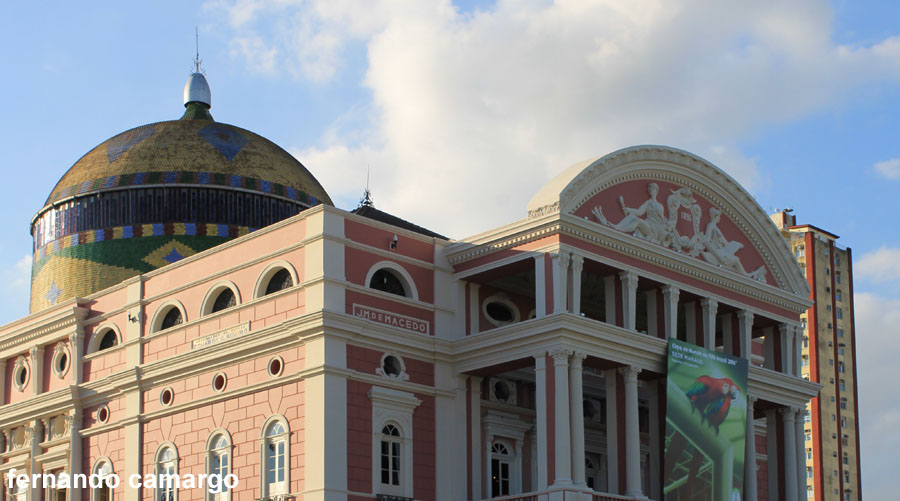
Opera of Manaus
The most famous building in Manaus is the Teatro Amazonas, which was opened in 1896. The richness of the rubber monopoly made the construction of an opera on the Amazon possible. Although Brazil has been independent since 1825, European architects have been hired for the Manaus opera and almost all materials have been transported from Europe into the jungle. The Italian architect Enrico Mazolani designed the neo-Baroque façade, which is dominated by a tiled dome with motifs from the Brazilian flag. The interior of the Teatro Amazonas was designed by the Brazilian Crispim do Amaral, the ceiling painting in the opera room by Domenico de Angelis shows four scenes depicting the "Glory of the Fine Arts of the Amazon" (A Glorificação da Belas Artes na Amazônia). When the rubber price fell in 1907, the last curtain fell as well in the Manaus Opera House. The Opera of Manaus was reopened in 1990.
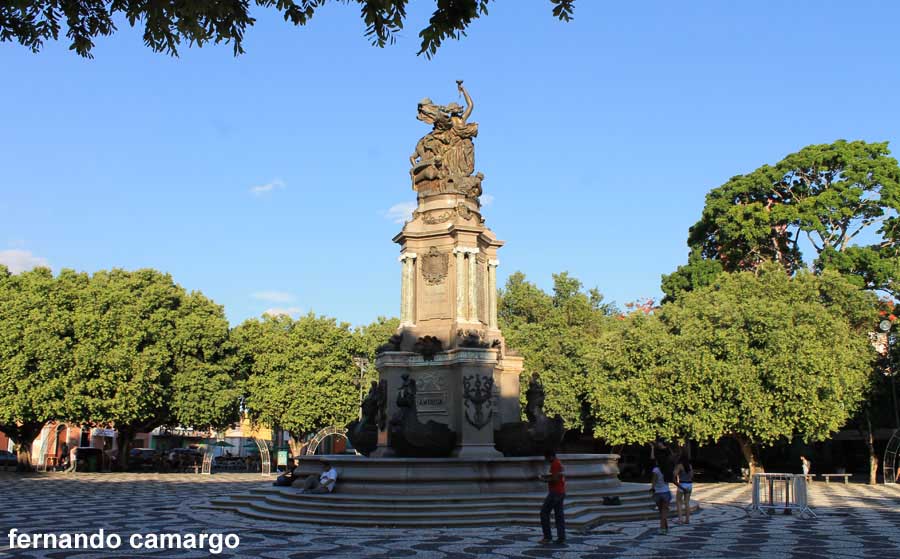
Praça São Sebastião
The square in front of the Teatro Amazonas is called Praça São Sebastião and is the center of Manaus. The black and white waves of the cobblestones represent the confluence of Rio Negro with the Amazon. A motif found in many Brazilian cities. The paving stones came from Portugal. This black and white road surface is made of white limestone and black basalt and is called "Calçada Portugesa", in Brazil also "Pedra Portugesa". Saint Sebastian is the patron saint of wells, forest workers, soldiers and others. São Sebastião is also the patron saint of Rio de Janeiro, by then the capital of Brazil.
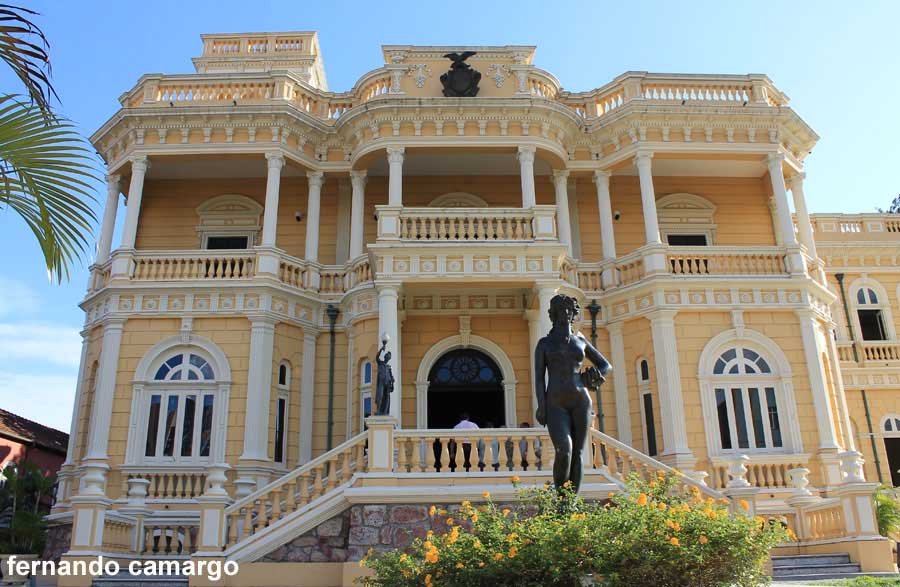
Pálacio Rio Negro
The Pálacio Rio Negro was built in 1913 by the German rubber baron Waldemar Scholz. The stately townhouse is very well preserved and served after the rubber boom as the seat of the regional government. Today, the Pálacio Rio Negro is a cultural center housing two museums. The Museu Numismatica (Coins) and the Museu da Imagem e do Som (Museum of Images and Sounds).
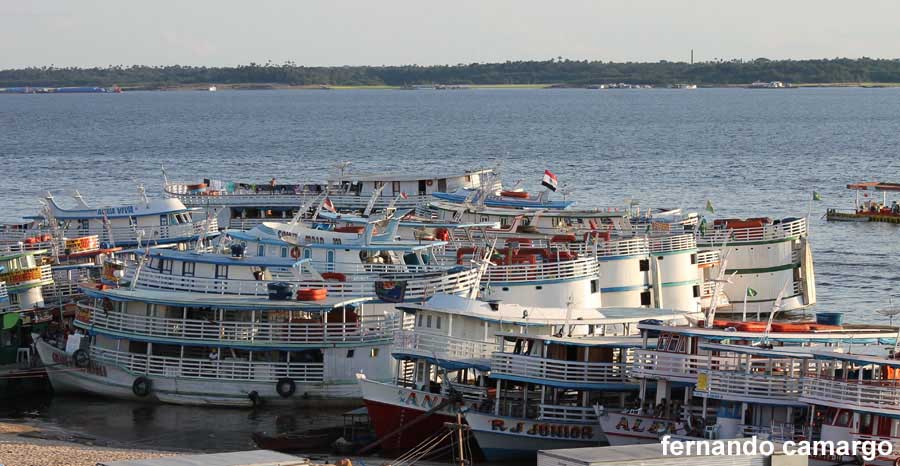
Harbour of Manaus
The Amazon river is still the main artery of the region. The multi-storey ships connect the villages to the numerous waterways and serve as cargo ships, to bring goods to remote villages along the rivers. The port of Manaus works much like a bus station in other Brazilian cities. The road network in the Amazon is still very bad and bridges over the several kilometers wide Amazon or other large rivers are do not exist or are extremely rare.
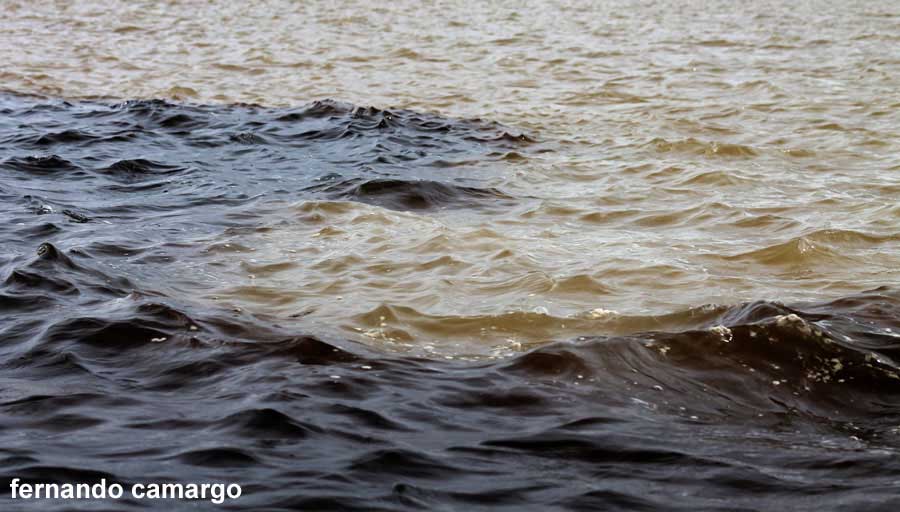
Meeting of the waters
Some 16 kilometers from the port of Manaus, the Rio Negro flows into the great Amazon. The water of the Rio Negro is black and mixes here with the muddy brown of the Amazon. Where the two rivers meet, turbulences arise with both shades. The confluence of the Rio Negro and the Amazon is the biggest attraction of Manaus. Excursion boats offer tours to the "Encontro das Aguas", as the Meeting of the waters is called in Portuguese.
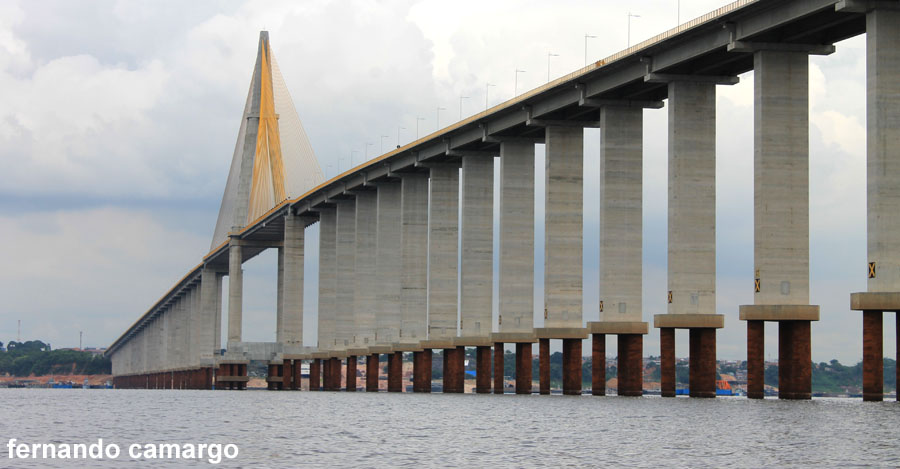
Ponte Rio Negro
One of the few bridges in the Amazon region is the Ponte Rio Negro. The 3.5-kilometer cable-stayed bridge stands on concrete pillars that protrude up to 70 meters from the water, depending on the water level. The bridge over the Rio Negro connects Manaus with the town of Cacao Pirera, where now new commercial areas and housing estates are created. Construction of the bridge began in 2008, in 2011 the Ponte Rio Negro was opened.
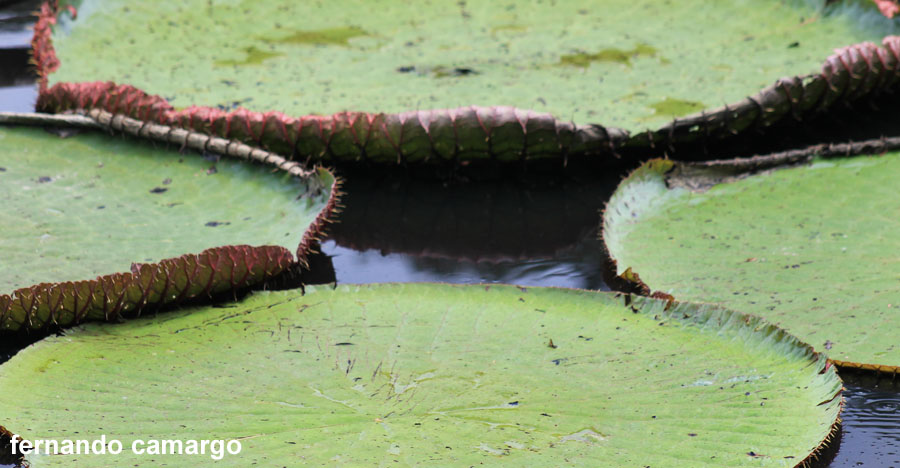
Vitoria Regia
The giant water lily "Vitoria Regia" or "Victoria amazonica" can produce leaves with a diameter of up to 3 meters. The petiole can be 7-8 m long. The white flowers have a diameter of about 40 cm. The giant water lilies are an attraction in botanical gardens around the world. Around Manaus you can find them everywhere. The "Victoria amazonica" is the trademark of the Amazon region and one of the most popular photo opportunities.
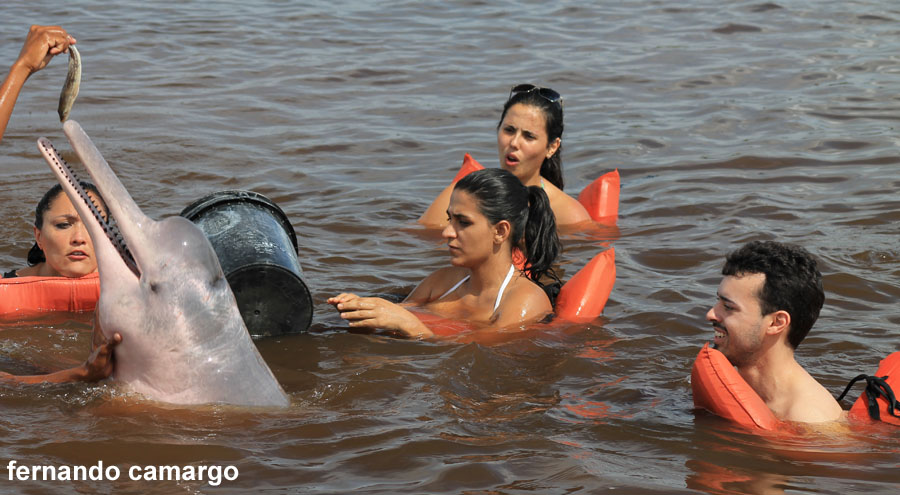
Amazon dolphin
The Amazon dolphin lives in the quiet side arms of the great rivers in the Amazon basin. The pink river dolphin is almost blind and catches its prey fish via echolocation. The Amazon dolphin is called "Boto" by the locals. From Manaus one can make day trips to the dolphins, which are attracted with fish in shallow waters . You can go into the water to swim with the dolphins. Various operators organize "Boto tours" from Manaus to the pink river dolphins.
Amazon indigenous people
Formerly many native tribes lived far away from civilization in the Amazon Basin. Today there are only a few tribes that live in the jungle as they did 1,000 years ago. Most native born people of the amazonas prefer to wear t-shirts and shorts instead of traditional clothing. If you want to see traditional "Indians" you should visit a tourist village. Here you are allowed to photograph the indigenous people. From Manaus you can take a day trip to a village of native tribes. Ask at the hotel reception for a good tour operator.
Touristmap of Manaus
ads
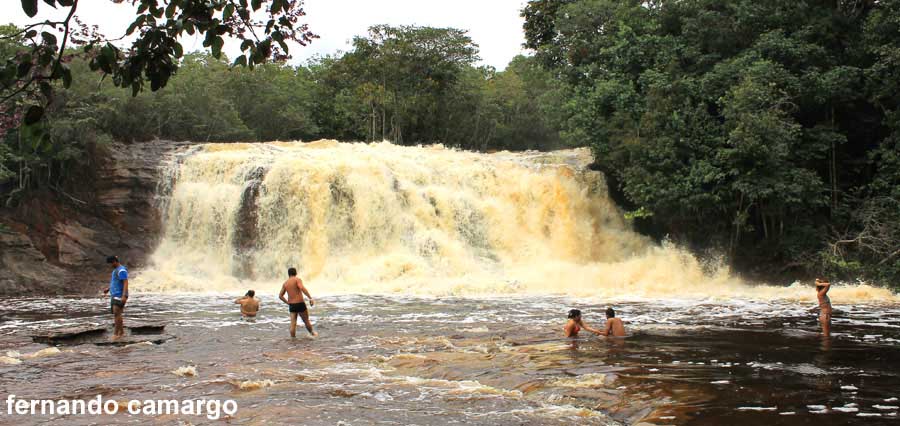
Rio Urubui Waterfalls
At the Rio Urubui there are numerous waterfalls that flow over rocks in the jungle and have created pools for swimming. The most famous waterfall at Urubui is the "Cachoeira de Iracema" near the village of Presidente Figueiredo. The town of Presidente Figueiredo is about 120 km to the north of Manaus.
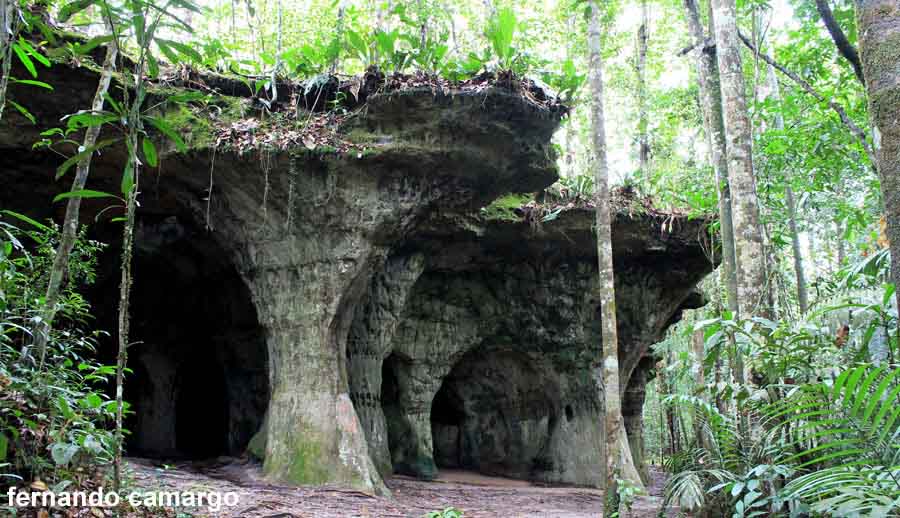
Palacio Galo da Serra
Near the village of Presidente Figueiredo there are some interesting caves. The Caverna Araras is located directly at the Urubui River, and Caverna Maruaga is known for its small stream inside. The most beautiful cave formation is the "Palacio Galo da Serra". The cave looks like huge mushrooms, but is named after the rock cock, a colorful bird. You can take a bus from manaus to Presidente Figueiredo, on the spot you should take a guide by car, which shows and explains the natural wonders of the area. From Manaus there are also organized day trips with all the sights around Presidente Figueiredo.
General map of Manaus region
ads
Travel Guide Manaus
Welcome to Manaus
Manaus is the capital of the Brazilian state of Amazonas. The city has more than 2 million inhabitants, making it the largest city within a radius of 1,500 km. The next major city is Caracas in Venezuela. Since Manaus got city rights in 1848, the historical legacy of the metropolis in the jungle is quite clear. Manaus is an interesting starting point for various tours into the rainforest on the Amazon river, to Indian villages and the Amazon dolphins.
ads
ads


